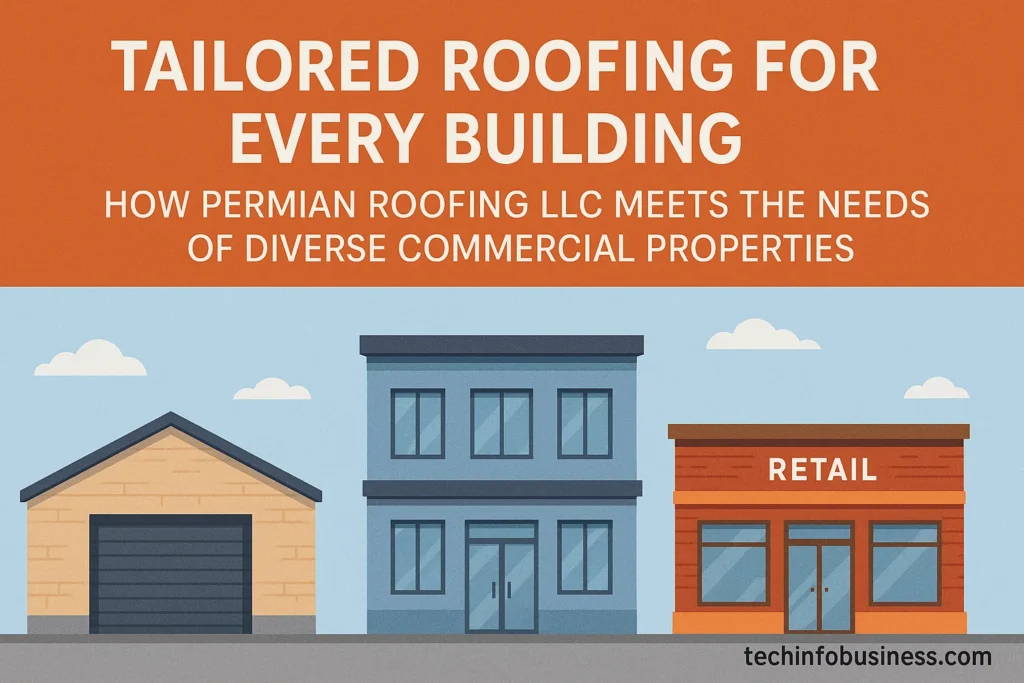Adapting roofing solutions to meet the demands of varying commercial property types requires a clear understanding of each building’s function, structure, and long-term needs. No two commercial properties are truly alike, from retail centers to industrial warehouses. That’s why a one-size-fits-all approach to roofing is ineffective in the long run. Instead, businesses seek dependable service providers who consider a property’s use, traffic patterns, exposure to weather, and overall design before recommending a solution. We will explore how the company adjusts its roofing services to accommodate the distinct requirements of a wide range of commercial properties, offering solutions that are durable, cost-effective, and suitable for each type of building’s performance expectations.
Responsive Roofing Solutions for Every Commercial Structure
Commercial properties come in all shapes, sizes, and functions—from retail centers and medical clinics to warehouses, offices, and hotels. Each type brings a different set of expectations for its roofing system. A shopping mall might prioritize aesthetics and energy efficiency due to public visibility and HVAC demands. In contrast, an industrial warehouse may need insulation, ventilation, and resistance to chemicals or heavy equipment. Permian Roofing LLC of Odessa begins each project by analyzing the property’s core function, roof layout, and environmental pressures. This allows the team to choose materials and designs that meet the building’s usage demands while ensuring regulatory compliance and energy efficiency.
Flat roofing systems are a common choice for commercial properties due to their accessibility and ability to support equipment like HVAC units and solar panels. However, not all flat roofs serve the same purpose. For example, retail centers often need reliable drainage systems and reflective surfaces to reduce cooling costs. On the other hand, warehouses require materials that stand up to shifting interior temperatures or warehouse machinery. The team may recommend TPO membranes for buildings focused on energy performance or modified bitumen for properties dealing with fluctuating internal conditions. Matching roofing materials to each building’s unique usage ensures long-term reliability.
Older commercial properties and heritage buildings present their challenges. These structures may not be compatible with modern roofing systems and often contain outdated materials or construction elements. Rather than taking a purely functional approach, the company evaluates both the performance needs and historical characteristics of the building. Materials are selected to preserve architectural design while reinforcing the overall structure. This balance between form and function is especially important for buildings that serve public-facing roles, such as hotels or city landmarks, where appearance carries weight along with performance.
Large multi-unit commercial spaces—such as office complexes, distribution centers, or apartment buildings—require roofing strategies that address logistics just as much as materials. During installation, multiple elevations, intersecting utility systems, and high-traffic zones must be considered. The company implements structured project timelines and detailed staging plans, often phasing work to reduce disruption to tenants and business operations. This attention to detail allows ongoing operations during extensive upgrades or replacements, helping facility managers avoid costly delays or interruptions.
Maintenance also varies dramatically depending on the type of commercial building. Restaurants and commercial kitchens might struggle with grease exhaust and air pollution settling on the roof, while medical buildings could experience frequent traffic from HVAC servicing and vent maintenance. Regular inspections tailored to these stressors are vital. The team doesn’t offer a generic maintenance package—instead, they design a routine based on usage, system complexity, and environmental exposure. This tailored upkeep approach extends the roof’s life and reduces the risk of premature damage or costly repairs.
Sustainability plays a growing role in commercial property design, especially in regions where utility costs are high or green certifications offer business incentives. Reflective roof coatings, solar-compatible membranes, and even vegetative green roofing systems are now part of the roofing conversation. Permian Roofing LLC works with building owners to assess feasibility and structural requirements before implementing energy-efficient upgrades. In offices, this might mean installing white TPO membranes that reduce cooling demand, while in educational buildings or hospitality venues, living roofs may be explored to enhance insulation and aesthetics. Whatever the solution, the focus remains on matching the upgrade to the performance demands of the structure.
Reliability and quick turnaround times are non-negotiable in mission-critical facilities like hospitals, server centers, or food processing plants. Roofs in these buildings must be maintained or replaced with minimal downtime. The team offers low-disruption solutions like off-hour installation or phased scheduling to accommodate sensitive operations. Their project managers also coordinate closely with building supervisors to ensure safety, noise reduction, and protection of indoor operations. This type of flexible planning enables high-functioning buildings to remain active even during construction, without compromising safety or building code compliance.
Roofing for commercial properties demands more than basic construction—it requires a deep understanding of how each building functions, its compliance needs, and its vulnerability to wear or weather. Whether the project involves replacing a roof on a restaurant, upgrading a retail center’s system for energy performance, or maintaining a sprawling office park, Permian Roofing LLC approaches each assignment with tailored solutions. By focusing on practical, informed decisions and adapting strategies to the purpose and structure of every property, they ensure that each roof serves not only as a protective layer but as a long-term asset to the business it covers.



